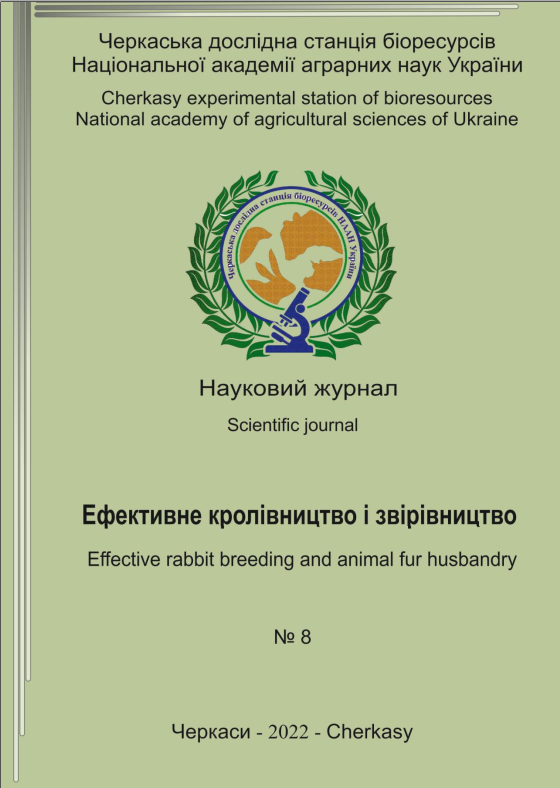DETERMINATION OF THE EMISSION OF POLLUTANT SUBSTANCES FROM THE FLYING HOUSE TO THE ATMOSPHERIC AIR DEPENDING ON THE EFFECT OF SOME PARATYPICAL FACTORS
Abstract
The relevance of the work is determined by the need to determine
coefficients of daily emission of pollutants from the premises of small livestock
facilities. The aim ofe work was to compare the coefficients of the daily emission of
pollutants into the atmospheric air from the rabbit hutch by calculation and
instrumental methods. The coefficients of daily emission of pollutants were
determined depending on the frequency of manure removal and the period of the
year. Bibliographic, instrumental, mathematical and analytical research methods
were used to fulfill the tasks. The experimental work was carried out in a brick
room, equipped with a supply-exhaust ventilation system with a mechanical drive,
on the farm of the Cherkasy experimental station of bioresources NAAS. The
research was carried out using rabbits of the poltavske sriblobreed, which were
kept in galvanized cage batteries on a continuous concrete floor with one and two
removal of manure. The density of planting rabbits was 12.5-13.0 heads/m2.
Analytical studies have shown that in Ukraine, currently, there are no approved
indicators of daily emission coefficients from rabbit farms for carbon dioxide and
methane. However, they are both greenhouse gases. According to the results of
experimental studies, the preliminary coefficients of the daily emission of carbon
dioxide and methane for small rabbit breeding facilities were determined. They
were, respectively, 1250g x day-1 for CO2 and 40g x day-1 for CH4 per 100 kg of
live weight of rabbits. In addition, it is shown that the coefficients of daily emission
of ammonia into atmospheric air for the winter and spring and summer and
autumn periods, determined by the instrumental method, were 1.5-3.2 and 6.3-9.9
times higher than the calculated ones, respectively. This may be due to the yearround keeping of the animals in a closed rabbit house with a concrete floor in
galvanized cage batteries. At the same time, the coefficients of daily emission of
fine dust (PM1-10) for the winter and spring and summer and autumn periods,
determined by the instrumental method, were lower by 66.9-188.5 and 55.8-89.4
times, respectively. A significant variability of the coefficients of daily emission of
polluting substances from the premises was established, depending on the period of
the year, in particular, for ammonia, methane and fine dust. Two-time removal of
manure from the premises of the rabbit hutch likely reduced the average annual emission coefficients of carbon dioxide, ammonia, and methane by 8.4%, 7.9%,
and 17.8%, respectively, but increased the average annual emission coefficient of
fine dust by 3.9%.



